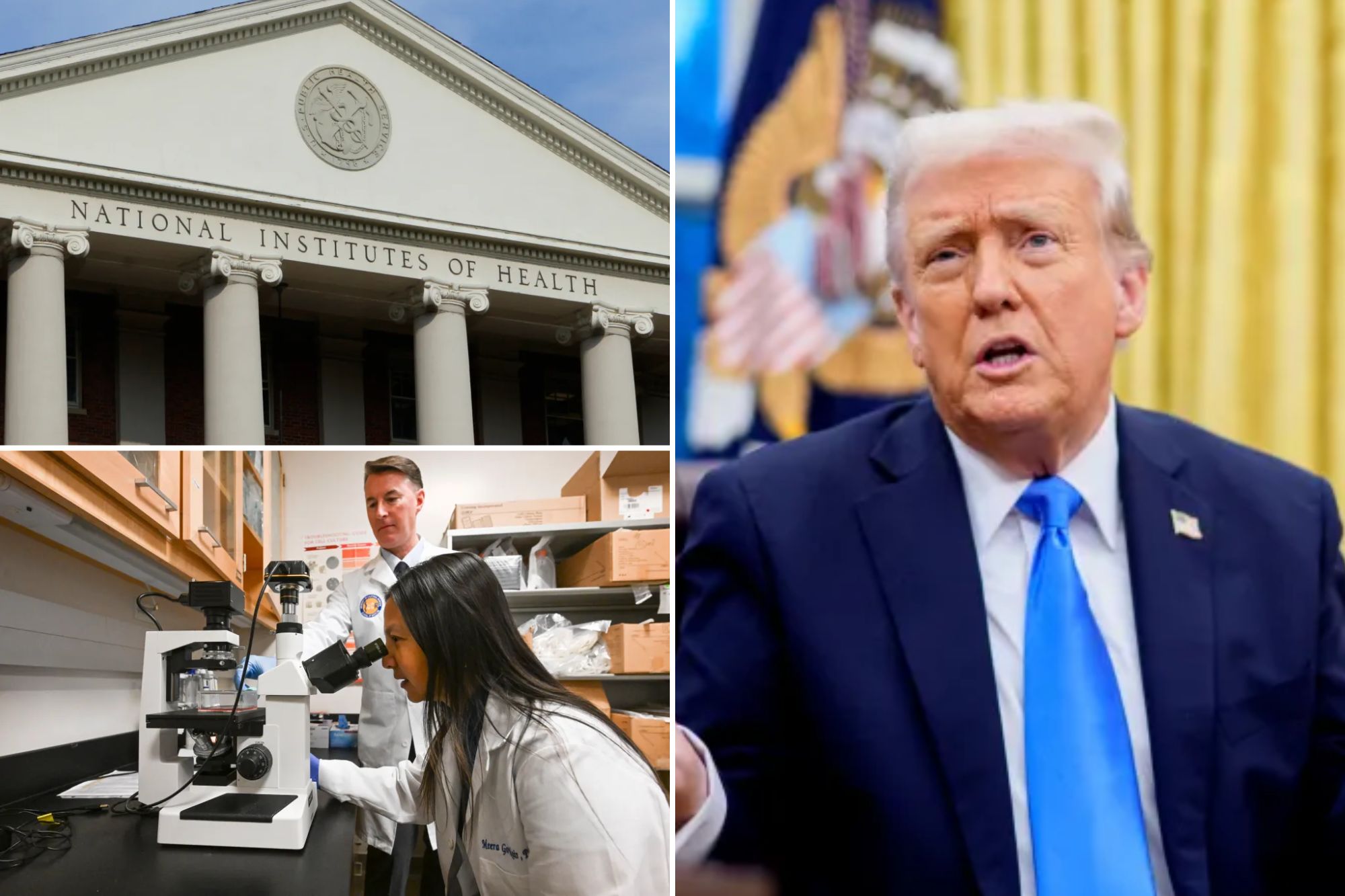
The Trump administration’s decision to reduce the upper costs related to research funded by the Federation has sparked a tremendous reaction.
But some doctors are praising this action, suggesting they will help “optimize” how taxpayer dollars are used when it comes to scientific research.
A new rule from the Trump administration that came into force on Monday, covered facilities and administrative costs, also known as “indirect costs”, with 15% for federation -funded research grants provided by the National Institute of Health (NIH) .
When a grant is given to a scientist from NIH, an additional percentage, at the top of allocated research funds, goes to the object that houses their work to cover these “indirect costs”.
According to a announcement about the new funding lid by the Trump administration, that percentage was historically about 27% to 28% for each grant.
But in some cases, negotiated rates can be up to 70% to 90%, according to doctors who spoke to Fox News Digital.
“If the money is lowered to 15%, what means there will be more grants of data to do science. You get more money in NIH to give more science,” said Dr. Vinay Prasad, a hematologist-onologist and professor at the Department of Epidemiology and Biostatistics at the University of California, San Francisco.
“Time,” said Dr. Erika Schwartz, founder of Evolved Science, which is a medical practice goalkeeper in New York City with more than 1,500 active patients.
“While infrastructure support is needed, there is room for more efficient cost management. A model of reformed financing can redirect more resources to direct research activities while maintaining essential support services. This can potentially increase the number of projects Funded by research and accelerating medical advances, eventually taking advantage of patients more directly. “
Prasad claimed that universities and research institutions have negotiated “beloved deals” that allow them to accumulate in funds that are sometimes not even needed for the research in question.
To demonstrate his view, he explained the numbers for a research institution that has negotiated a 57% rate for indirect costs:
“Let’s say I get $ 100,000 [for a research project] And I need a lab … I have $ 100,000, and then they still get $ 57,000 at university that goes to the administrators, and apparently the fact that I have a lab bench, and lights, etc. But now let’s say I do the same project $ 100,000, but my project is that we will analyze the genomic sequences from an online warehouse. So, I just have a laptop … but they still get $ 57,000 even though there is no space given to this person. There is no bench, no table, there is nothing. “
Prasad added that another “underlying problem” with these negotiated norms is that money has not been officially budget, so “the American people do not know where they are going money”.
“A famous scholar once told me, a nih dollar is more valuable than any other dollar because they can use it for whatever purpose they want. Although, nominally, they must use it to keep the lights and, you know , make the buildings work, but it is not always the case, ”he said.
David Whelan, a former Forbes health care writer who has spent time working in hospitals and now working in the health care counseling space, echoed this concern in a post on X who claimed that universities used indirect payments of search “to accumulate money”.
“Indirects are just ways of rich academic hospitals to pocket money that their investigators earned and then create slush for those who are unable to finance themselves,” wrote Whelan. “It is a big makeup and [a] Excellent place for cuts. “
Trump administration cap for indirect funds related to NiH research grants was immediately challenged in court with a lawsuit by 22 lawyers general of the democratic state and a group of universities, which argued that the measure would “destroy critical public health research at universities and research institutions in the united states. “
“Once again, President Trump and Elon Musk are acting in direct violations of the law. In this case, they are causing irreparable damage to ongoing research to develop cures and treatments for cancer, Alzheimer’s disease and related dementia, ALS, diabetes, mental health disorders, opioid abuse, genetic diseases, rare diseases and other diseases and conditions affecting American families, “said Rep. Rosa Delauro, D-Conn., Member of the Committee of the Chamber Committee.” The Trump administration is trying to steal critical funds promised for scientific research institutions funded by NIH, despite a clear legal prohibition against this action. ”
In response to the lawsuit by the prosecutors general of the democratic state, a federal judge imposed a temporary restriction order prohibiting NIH agencies from taking a step to implement, implement or enforce the new rule.
The judge’s order also asked the Trump administration agencies affected by the new rule to submit reports within 24 hours to confirm the steps they are taking to comply with the ruling.
Meanwhile, a hearing date within the person on this issue is scheduled for February 21.
#Scientists #expect #big #medical #advances #Trumps #lid #nih #search #funds
Image Source : nypost.com